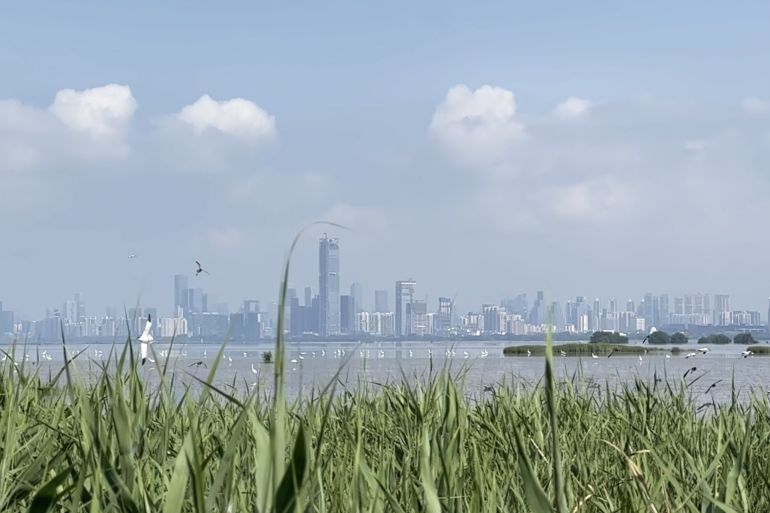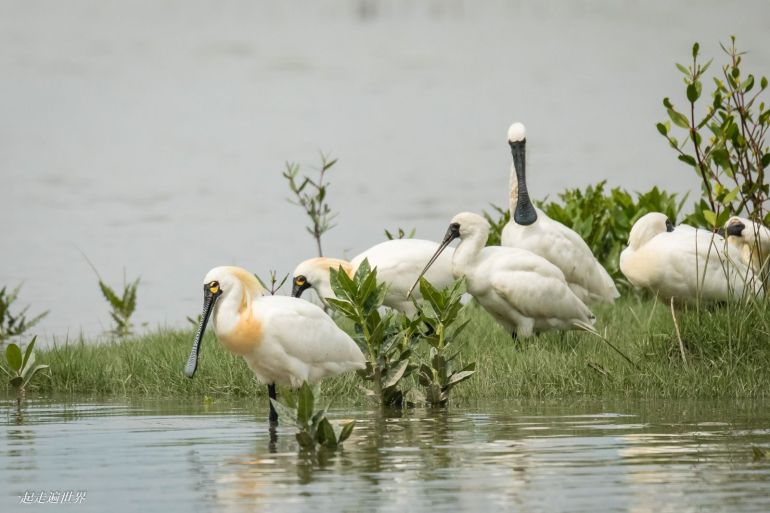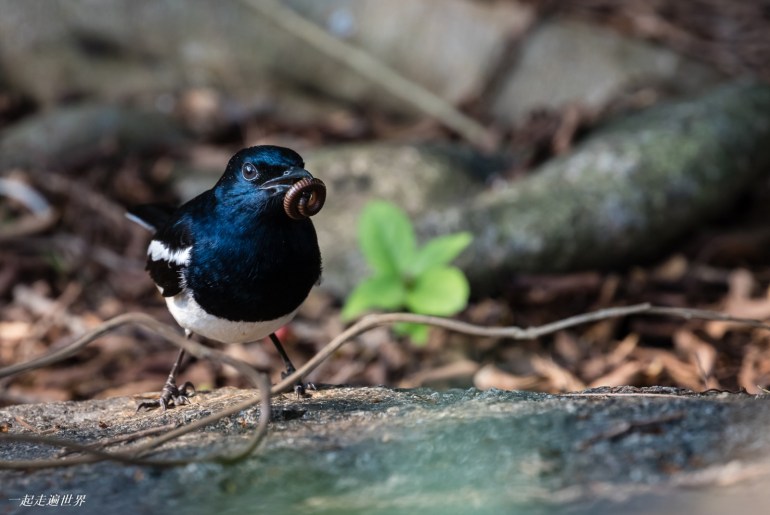China’s rise casts shadow over Hong Kong’s teeming wetlands
Semi-autonomous city’s integration with southern China has sparked fears for rural areas known for their biodiversity.

Hong Kong, China – Barry Ma peers through the lens of his high-powered telescope and raises his arm as he points in excitement.
“Here!” he says in a hushed voice. “Look here.”
Keep reading
list of 4 itemsEgypt accused of thwarting environmental groups ahead of COP2
In Bangladesh, climate activism draws government retribution
Environmental activists throw soup over van Gogh’s Sunflowers
Ma has spotted a pair of little grebes — a duck-like bird, but an unrelated species — swimming on a pond in Hong Kong’s wetlands, nestled in the city’s rural New Territories.
An eco-guide for the World Wide Fund for Nature Hong Kong (WWF-Hong Kong), Ma is leading a small group of visitors through the Mai Po Nature Reserve under a bright sun on a humid morning.
He identifies a number of species inside the 380-hectare (939-acre) reserve: white-breasted water hens; yellow-bellied prinias; black-winged stilts; Oriental magpie-robins; great egrets and little egrets.
But his enthusiasm is tempered by an uncertain future for the wetlands, which are also home to frogs, fiddler crabs, pangolins, water buffalos — even a handful of Eurasian otters, an elusive nocturnal mammal.

Urbanisation is coming to the wetlands, and it remains to be seen whether the area’s biodiversity can continue to thrive along with human development.
The Hong Kong government, nominally semi-autonomous from Beijing under a system known as “one country, two systems”, has acknowledged the importance of protecting the wetlands and has laid out proposals to preserve their biodiversity. At the same time, officials and the business community are committed to expanding the city’s integration with southern China.
For a glimpse of what is to come, one just needs to look across Deep Bay, the body of water that separates Mai Po from mainland China.
The gleaming highrises of Shenzhen, with a population of more than 17 million, loom just beyond the wetlands, providing a stark reminder of the rapid economic industrialisation of the region.
The future of Hong Kong’s wetlands, an important stopping point for migratory birds, seems precarious. And efforts to preserve the wetlands — by both the government and environmental non-governmental organisations — are now under scrutiny.
Mai Po sits deep inside the Hong Kong government’s proposed Northern Metropolis — an ambitious plan to transform the mostly rural area into a sprawling residential and business community that will further tighten its link with Shenzhen, an important technology hub that is home to such companies as Tencent, Huawei and DJI.

The plan is part of Hong Kong’s pivot towards the so-called Greater Bay Area, which encompasses parts of Guangdong Province, including Shenzhen, as well as Macau and Hong Kong. It boasts a population of nearly 90 million.
The Northern Metropolis plan has been welcomed with cautious optimism among conservationists, but they say more details are needed.
“We understand that governments are economic-oriented, but we focus on what they can do on nature conservation,” Yu Yat-tung, director of the Hong Kong Bird Watching Society, told Al Jazeera. “We are waiting for more details on the conservation side.”
The Northern Metropolis proposal needs to be more than “words on paper,” Yu added.
“We need to see a concrete plan.”
Similarly, Billy CH Hau, principal lecturer in the School of Biological Sciences at the University of Hong Kong, said the proposal to protect the wetlands appears to be a positive move, but “there is a general lack of details on the implementation”.
Whether the Northern Metropolis plan will actually benefit the overall wetlands system remains to be seen, Hau said.
“It’s very difficult to say.”
The Northern Metropolis is envisioned by the government as a centre for the innovation and technology sectors, and will provide space for hundreds of thousands of new housing units.
The current population in the northern New Territories stands at roughly 960,000, with about 390,000 residential units, according to the government. Hong Kong’s current population is about 7.4 million.
The government says that when the Northern Metropolis is completed, in about 20 years, it could potentially support a population of 2.5 million and increase total housing to 926,000 units.
Jobs in the region would jump to an estimated 650,000 from 116,000. While such growth is expected to put a strain on the wetlands, the government has promised to preserve the area’s biodiversity by integrating rural and urban development while promoting conservation and ecotourism.

Hong Kong Chief Executive John Lee, the city’s leader, described the Northern Metropolis as “the foothold for Hong Kong’s strategic development” in his policy address in October.
“A number of major development projects in the area have already commenced,” Lee said in his speech, adding that the region will eventually be a “new international I&T city” that will promote business development with sustainable living.
Lee also promised to protect the wetlands, saying that the government would buy privately-owned wetlands and fish ponds “with ecological value and develop a wetland conservation parks system, with a view to increasing the environmental capacity for the development of the Northern Metropolis”.
Wetlands occupy roughly 5 percent — just more than 50 square kilometres (19 square miles) — of Hong Kong’s 1,110sq km (425sq miles), according to government statistics. They provide a host of benefits to both humans and wildlife by mitigating climate change, offering a source of food and collecting rainfall runoff that helps to prevent flooding.
In its Northern Metropolis proposal, the government has estimated that the total area for wetlands and coastal conservation would be about 20sq km, which includes the existing wetland park and the Mai Po Nature Reserve.
WWF-Hong Kong has managed the nature reserve for nearly 40 years under the authority of the government’s Agriculture, Fisheries and Conservation Department, which itself is responsible for the entire 1,540-hectare (3,805-acre) Mai Po Inner Deep Bay Ramsar Site.
Eric Wikramanayake, director of wildlife and wetlands at WWF-Hong Kong, said the proposal for the Northern Metropolis is expected to be “custom designed” to include the wetlands within the infrastructure.
“We need to work closely with the authorities,” Wikramanayake told Al Jazeera, adding that his organisation also serves as a watchdog. “We cannot oppose development at all costs — development has to happen — but development has to integrate conservation priorities.”
Conservation also helps to preserve the livelihoods of workers who depend on the wetlands and its resources, Wikramanayake said.
“There should be solutions to ensure that people are fed and housed and have a stable future,” he said.